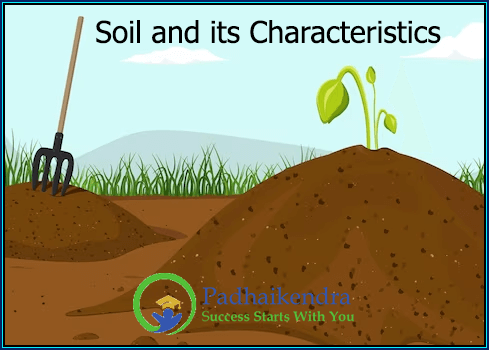Soil is a natural resource that is formed over time from the weathering of rocks and the decomposition of organic matter. It is a mixture of mineral particles, organic matter, water, air, and living organisms. Soil is an important resource for agriculture, providing nutrients and a medium for plant growth.
Soil plays an important role in the carbon cycle, as it can store large amounts of carbon in the form of organic matter. However, soil can also be degraded by erosion, pollution, and overuse, which can reduce its fertility and ability to support plant growth. Sustainable soil management practices, such as crop rotation, cover cropping, and reduced tillage, can help protect and enhance soil health over the long term.
Soil characteristics
Soil characteristics are physical, chemical, and biological properties that can be used to describe and evaluate soil quality and health. Some important soil characteristics include:
- Texture: Soil texture refers to the relative proportions of sand, silt, and clay particles in the soil. This can affect the soil’s ability to hold water and nutrients, as well as its drainage and aeration properties.
- Structure: Soil structure refers to the way that soil particles are arranged and held together. This can affect the soil’s porosity, permeability, and root penetration.
- pH: Soil pH is a measure of the acidity or alkalinity of the soil, with a range of 0 to 14. Most plants prefer a soil pH between 6 and 7.
- Organic matter: Soil organic matter is made up of dead and decaying plant and animal material, and can influence soil fertility, water-holding capacity, and nutrient availability.
- Cation exchange capacity (CEC): CEC is a measure of the soil’s ability to hold and exchange positively charged ions, such as calcium, magnesium, and potassium. This can affect the soil’s nutrient availability and fertility.
- Water-holding capacity: Soil water-holding capacity refers to the amount of water that the soil can hold and release for plant use. This can depend on soil texture, structure, and organic matter content.
- Microbial activity: Soil microbial activity refers to the presence and activity of microorganisms such as bacteria, fungi, and protozoa. These organisms can help break down organic matter and release nutrients for plant use.
By understanding these soil characteristics, farmers, gardeners, and soil scientists can better manage soil fertility and health, and help ensure sustainable land use over the long term.





